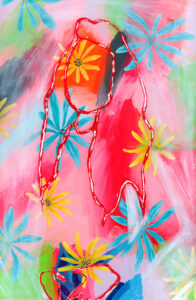 Can you tell us about your early life in Minsk, Belarus, and how it influenced your decision to pursue art?
Can you tell us about your early life in Minsk, Belarus, and how it influenced your decision to pursue art?
Like all children, I was very creative and artistic. My art teacher, who I met at a summer camp where she taught drawing, noticed my talent for color. This led me to attend art school at 14, where I studied sculpture, painting, and drawing with a classical approach. These formative years, guided by my teacher’s encouragement and mentorship, instilled in me a deep appreciation for traditional art techniques and ignited my desire to explore and express myself through art. Attending the children’s art school became something significant in my life, not just a hobby.
Moving to Amsterdam at a young age must have been a significant transition. How did this move influence your art and creative process?
Moving to Amsterdam was indeed a significant transition that greatly influenced my art. The vibrant art scene and modern approaches to art education in the Netherlands broadened my perspective. Studying at institutions like HKU Utrecht, the Rietveld Academy, and the Breitner Academy allowed me to blend the classical techniques and classical approach to drawing that I had studied in the children’s art school in Belarus with contemporary styles. This fusion led to the development of my unique artistic voice.
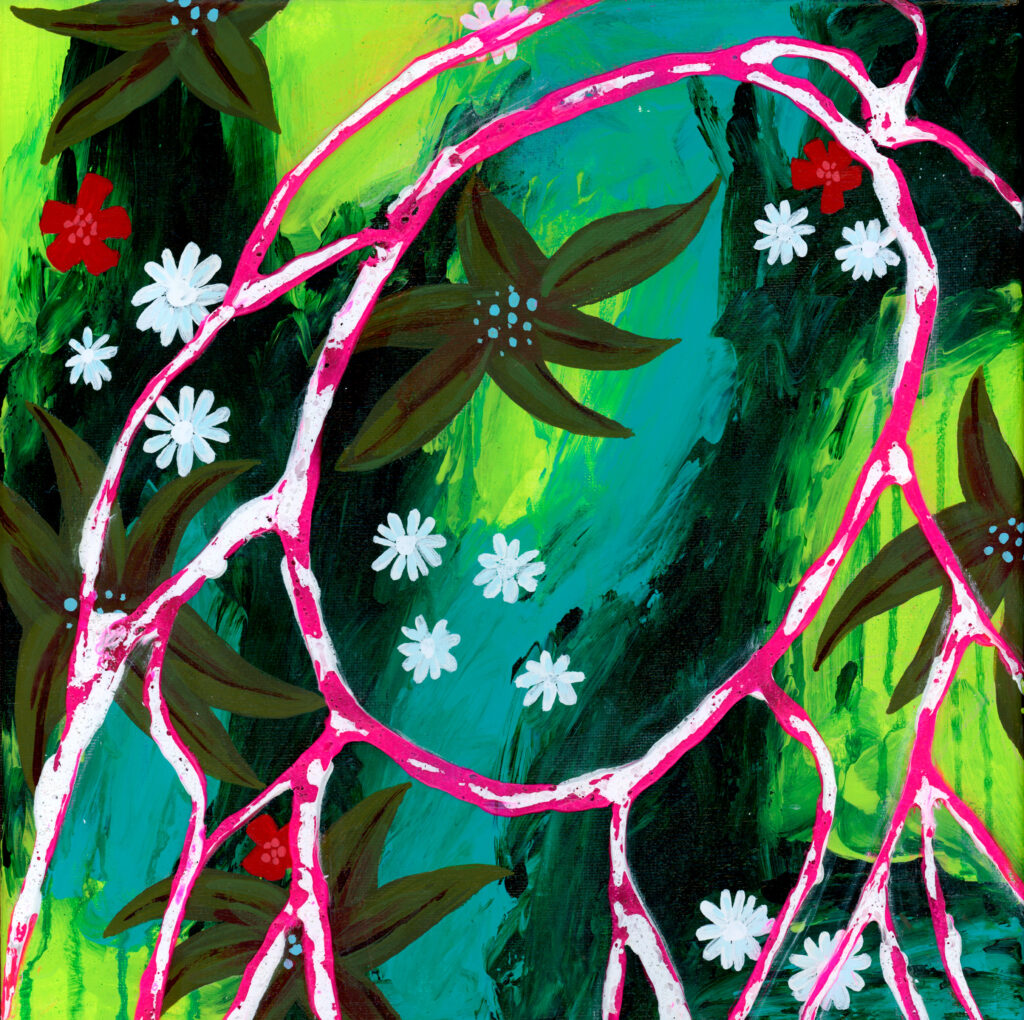
You have your own recognizable style. How did you develop it, and when did you first conceive this idea?
My style developed through years of experimentation and study. Combining the classical techniques I learned in my early years with the modern approaches I encountered in the Netherlands, I began to focus on using vibrant colors and intricate patterns. I balance and blend elements in my work, creating a harmony between something calm, such as composition, and something bright and expressive, like bold colors or broad strokes. This style allows me to explore themes of identity, femininity, and transformation, creating a distinctive and recognizable body of work.
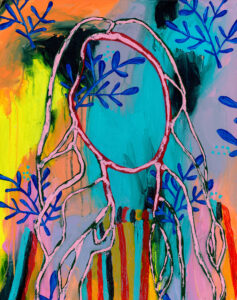 You often use bright colors in your paintings. What does color mean to you? Do you use color to help express something specific?
You often use bright colors in your paintings. What does color mean to you? Do you use color to help express something specific?
Color is a powerful tool for me. I use bright colors to evoke strong emotions and to convey the energy and vibrancy of life. Each color choice is intentional, helping to tell the story of the subject and to highlight the contrasts between different elements in my work. Colors like orange and yellow can represent joy and youth, while deeper hues can evoke a sense of mystery and depth. Additionally, I explore myself and my childhood in Belarus, my homeland, which is associated with vivid and rich memories. These are our dreams of something joyful and carefree. Our childhood memories are often bright and carefree, which is why I use vivid colors to reflect those joyful, uninhibited times.
What role do childhood memories play in your creative process?
Childhood memories play a significant role in my creative process. I often revisit these memories through the image of my niece, who frequently appears in my work. By doing so, I explore my own past and the stories of my life, conveying the essence of these memories through layers of color and pattern. This process allows me to connect with my younger self and to express the timeless nature of identity and experience.
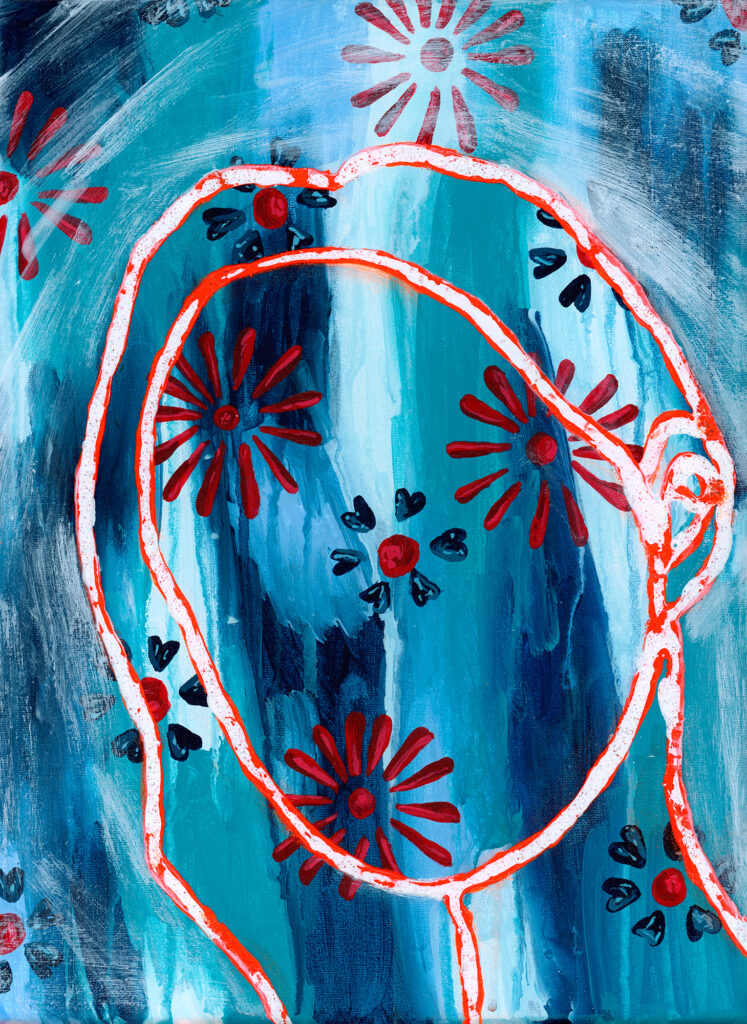
How do you envision your art evolving in the coming years, and what themes or ideas do you hope to explore next?
In the coming years, I envision my art continuing to evolve as I experiment with new techniques and materials. I hope to delve deeper into themes of transformation, resilience, and the interplay between tradition and modernity. Exploring the connections between personal and collective memories will remain central to my work, and I am excited to see where this journey takes me. I will continue to explore myself and my identity, particularly how my surroundings influence me. My identity as a woman and the changes I experience will be a focus, as I seek to find better ways to convey these aspects through my art.
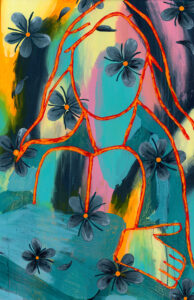 Reflecting on your journey, what has been the most significant moment or turning point in your artistic career?
Reflecting on your journey, what has been the most significant moment or turning point in your artistic career?
The most important aspect of my journey has been the people I’ve met along the way, particularly my teachers, who have significantly contributed to my development as an artist. Their guidance and the sharing of their experiences have been invaluable, even though I only absorbed what resonated with me. Each artist has their unique path, but the mentors encountered along the way are crucial.
Additionally, participating in exhibitions in various cities and venues has been significant. Interacting with audiences and seeing how my art resonates with viewers is incredibly important to me. These experiences also underscored the importance of community and collaboration in the art world.
Could you share a piece of advice for aspiring artists who are trying to find their voice and style?
My advice to aspiring artists is to embrace experimentation and to be patient with the process. Finding your voice and style takes time and involves exploring various techniques and mediums. Don’t be afraid to make mistakes and learn from them. Most importantly, stay true to your own vision and let your personal experiences and emotions guide your work. It’s crucial to find your unique path in art, as that will make your work truly distinctive. Authenticity is key to creating meaningful and impactful art.
Website | Instagram
 Can you tell us about your early life in Minsk, Belarus, and how it influenced your decision to pursue art?
Can you tell us about your early life in Minsk, Belarus, and how it influenced your decision to pursue art?
 You often use bright colors in your paintings. What does color mean to you? Do you use color to help express something specific?
You often use bright colors in your paintings. What does color mean to you? Do you use color to help express something specific?
 Reflecting on your journey, what has been the most significant moment or turning point in your artistic career?
Reflecting on your journey, what has been the most significant moment or turning point in your artistic career?
Zola S.
I love this! Such a creative way to do art.